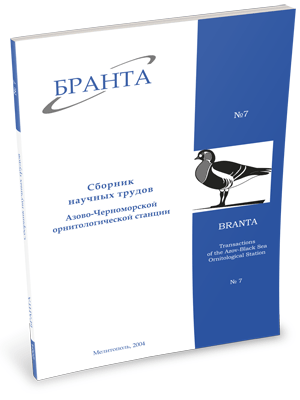
Transactions
of the Azov-Black Sea Ornithological Station



Colonial Pelecaniformes and Ciconiiformes birds of the eastern near Azov area
Belik V.P., Dinkevich M.A.
The paper summarizes literary data since 1950s and original communications of authors gathered over the period 1967-2004 in the eastern near Azov area (Krasnodar Territory and Rostov region, Russia). The review gives data on 5 species of Pelecaniformes (Dalmatian Pelican, White Pelican, Great Cormorant, Shag, and Pygmy Cormorant), 2 species of Ibididae (Spoonbill and Glossy Ibis), and 7 species of colonially breeding herons (Night Heron, Squacco Heron, Cattle Egret, Great White Egret, Little Egret, Grey Heron, Purple Heron). There was registered the breeding of 12 species of colonial Ciconiiformes and Pelecaniformes. The breeding of other 2 species (White Pelican and Cattle Egret) is probable, but need to be confirmed. At present about 150 colonies have been discovered in the area. There breed 30,000 - 40,000 pairs of Pelecaniformes and Ciconiiformes birds in Krasnodar Territory, and 5,000 - 6,000 pairs in Rostov region. Main nesting places concentrate at hard-to-reach limans in the Kuban Delta. Settling of new colonies is connected with anthropogenic water bodies and artificial forest plantations in a zone of rice fields. The Great Cormorant is the most numerous out of colonial species (more 10,000 pairs). Such birds as Pelicans, Spoonbill, Squacco Heron and Shag still show low numbers and are very vulnerable. The numbers of the Pygmy Cormorants that recently settled in the eastern near Azov area are rapidly increasing. Though the question of naturalizing Cattle Egret in this area is yet unclear.
Read the paper in a PDF file